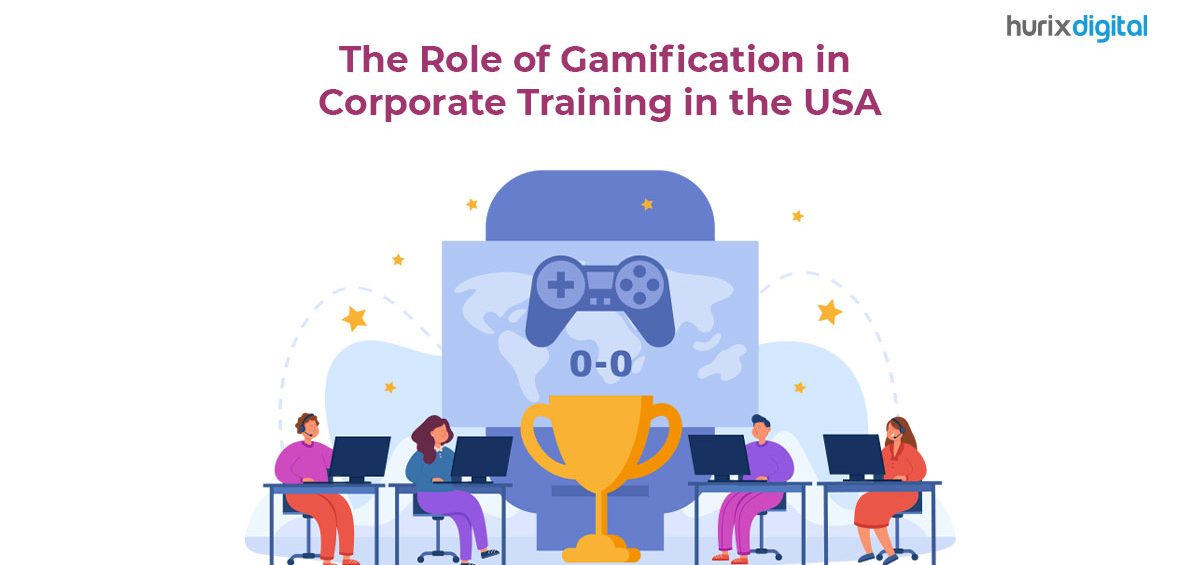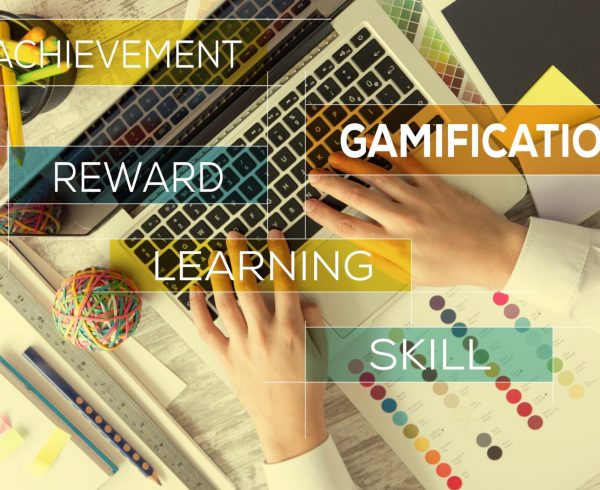Gamification has become a popular buzzword in the corporate training world in the USA, as more and more organizations are adopting this approach to improve their employees’ engagement, motivation, and learning outcomes. This article will discuss the role of gamification in corporate training, its benefits, and how it can be used effectively to enhance the learning experience.
Why use gamification?
Motivation
One of the significant advantages of gamification in corporate training is that it keeps the learner’s motivation levels high through the use of game mechanics such as points, badges, leaderboards, and challenges. Gamification also contributes to learner motivation by providing learners with immediate feedback on their progress. By using tools such as leaderboards and progress bars, learners can see how they are performing in real-time and adjust their learning strategies accordingly. This can help them stay on track and make more effective use of their time.
Encourages collaboration and communication
Gamification in corporate learning programs can be an effective way to encourage collaboration and communication among employees. By incorporating gamification elements such as team challenges, leaderboards, and rewards, employees are incentivized to work together, communicate effectively, and share knowledge to achieve common goals. Here are some ways in which gamification can encourage collaboration and communication among employees:
Team challenges: Gamification programs can include team challenges that require employees to work together to solve problems or complete tasks. By working together towards a common goal, employees are encouraged to communicate and collaborate with one another, sharing their knowledge and expertise to achieve the desired outcome.
Social interactions: Gamification programs can include social elements, such as chat features or forums, that encourage employees to communicate with one another. By providing a platform for social interactions, employees are encouraged to share their knowledge and expertise, ask questions, and collaborate with one another to achieve their learning objectives.
Collaborative learning activities: Gamification programs can include collaborative learning activities, such as group projects or peer-to-peer reviews. These activities encourage employees to work together, share knowledge, and provide feedback to one another, promoting collaboration and communication.
Rewards: Gamification programs can include rewards for achieving specific milestones or completing certain challenges. By providing rewards that are shared among a team, employees are encouraged to work together and collaborate to achieve their goals, rather than working in isolation.
By incorporating gamification elements that incentivize teamwork, social interactions, and knowledge sharing, employees are more likely to collaborate effectively, communicate openly, and learn from one another. This can lead to improved overall performance and productivity for the organization.
Long-term benefits from gamification data
In the long term, the data generated by gamification programs can provide valuable insights into the learning needs of individual learners. The results from a gamified learning program can be analyzed to identify patterns and trends in learners’ performance, behavior, and preferences, which can be used to design personalized learning experiences that meet their unique needs. Some ways in which the results from a gamified learning program can be analyzed for insights into the learning needs of individual learners are explained below.
Learning & performance analytics: Gamification programs can track learners’ progress and performance in real time, providing valuable data on how well they are doing. The results from quizzes, tests, or simulations can be analyzed to identify areas where learners are struggling and areas where they are excelling. This information can be used to design personalized learning experiences that address learners’ weaknesses while building on their strengths.
Engagement analytics: Gamification programs can track learners’ engagement levels, such as how frequently they log in, how long they spend on each activity, and how often they complete challenges. This information can be used to identify learners who are disengaged or struggling and provide them with additional support or incentives to keep them motivated.
Social analytics: Gamification programs can track learners’ interactions with their peers, such as the number of times they collaborate on group activities or share information. This information can be used to identify learners who are struggling to work effectively in teams and provide them with additional support or training.
Does gamification ensure learning effectiveness?
Gamification has been found to be an effective tool for enhancing the learning process and improving learning outcomes. When done correctly, gamification can increase student motivation and engagement, improve knowledge retention, and encourage learners to take an active role in their own learning.
However, it is important to note that gamification does not, by itself, ensure learning effectiveness. Learning effectiveness depends on how well the gamified learning program is designed and implemented.
To ensure the effectiveness of gamification in corporate training, it is essential to design the games and activities with a clear performance objective in mind. The games should align with the organization’s overall training goals and be relevant to the employees’ job responsibilities.
Know more:
How To Use Gamification In Your Corporate Microlearning?
How Game-Based Learning Solutions Raise Productivity and Drive Business Growth?
In conclusion, gamification is a powerful tool that can enhance the effectiveness of corporate training in the USA. By creating an interactive and engaging learning environment, gamification can improve retention rates, increase motivation, and foster a sense of community among employees. As organizations continue to invest in employee training and development, gamification will undoubtedly play a more significant role in the future of corporate training.
Thinking of incorporating gamification in your workforce learning & development programs? Let’s help you chalk out a strategy. Contact marketing@hurix.com for further details








